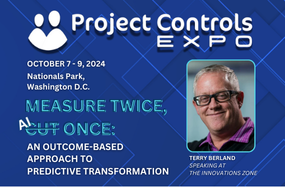
Cloud Capital: The Strategic Value of a Unified Cloud Platform in AEC Project Controls

You’ve likely come across the term ‘cloud capital’ lately—a relatively new concept that’s quickly becoming central to how AEC firms evaluate their digital strategy. At its core, cloud capital is the accumulated value—operational, financial, and strategic—generated by a connected, cohesive cloud ecosystem.
For project-driven organisations, especially those managing complex capital projects, this means moving beyond siloed tools and fractured infrastructure. A unified cloud platform builds cloud capital by enabling data clarity, scalability, and faster, smarter decisions. This article explores why cloud capital matters now—and how it’s reshaping competitive advantage across the AEC sector.
Business Value of a Unified Cloud Platform
- Operational Consistency Across the Portfolio
A unified cloud platform brings order to the operational sprawl that plagues most AEC organisations. Instead of juggling inconsistent tools and isolated data silos, firms gain a single, governed environment for core functions like scheduling, cost control, risk management, document workflows, and analytics.
This consistency goes beyond IT hygiene—it’s strategic infrastructure. Standardised data models and reporting frameworks create a common language across projects, tools (P6, Powerproject, MS Project), and global delivery teams. The result: faster onboarding, cleaner audits, and fewer costly misunderstandings between field and office.
Just as critical, a unified platform reduces reliance on region-specific infrastructure and the shadow IT workarounds that often fill gaps. Everything runs through one secure, scalable architecture—no matter the site, team, or phase of the project.
- Accelerated Data-Driven Decision Making
Real-time integration across project systems turns cloud platforms into engines for insight. With clean, connected data flowing into a single environment, AEC leaders gain true programme-level visibility—allowing them to act on trends before they become problems.
Harmonised datasets also set the stage for advanced analytics and machine learning. Forecasting improves. Risks surface earlier. Teams move from reactive to predictive.
Unified platforms further streamline how insights are delivered. Whether through LoadSpring INSIGHTS, Power BI, or Tableau, reporting becomes faster, more consistent, and aligned with the business questions that matter.
- Stronger Governance and Risk Management
A unified cloud platform enforces centralised access control and compliance management, delivering enterprise-wide auditability that fragmented systems simply can’t match. This tight governance actively reduces exposure to cyber threats, contractual pitfalls, and operational risks that arise from patchwork or legacy tools.
By consolidating critical project controls into a secure, cloud-based environment, organisations bolster resilience and ensure business continuity—even in the face of disruptions.
- Scalability and Resource Optimisation
A unified cloud platform allows AEC firms to scale project controls seamlessly across geographies and business units—without the burden of costly, location-specific infrastructure. Computing resources like GPUs and storage dynamically adjust to workload demands, ensuring efficiency without overprovisioning.
Beyond operational benefits, this approach supports sustainability goals by minimising reliance on physical data centres, reducing energy consumption and carbon footprint. In an industry under increasing pressure to deliver greener projects, scalable cloud solutions offer a clear path to smarter resource management.
- Cost Transparency and Strategic Procurement
A unified cloud platform consolidates licensing, support, and infrastructure into a streamlined commercial model, eliminating the hidden costs of overlapping tools and fragmented systems.
With consolidated usage data and scale, procurement teams gain stronger negotiating leverage—securing better terms and pricing from software vendors.
What Is Cloud Capital?
Cloud capital is the cumulative value gained by digitising and unifying your project control environment. It builds long-term advantage through:
- Human capital – Freeing up talent via automation and smarter collaboration.
- Data capital – Transforming fragmented datasets into actionable, integrated intelligence.
- Process capital – Standardising workflows and governance across the portfolio.
- Resilience capital – Enhancing agility and reducing risk in volatile market conditions.
Building cloud capital isn’t just a technical upgrade—it’s a strategic imperative for modern AEC delivery.
Conclusion
For forward-looking AEC firms, adopting a unified cloud platform for project controls isn’t just an IT decision—it’s a catalyst for business transformation. It empowers teams with real-time insights, reduces cost and risk, and creates the foundation for scalable, repeatable project execution across the global portfolio.
The return isn’t limited to efficiency gains. It extends to commercial leverage, strategic agility, and long-term resilience. This is the essence of cloud capital—a measurable asset that grows with every project and drives competitive advantage at enterprise scale.
Build Your Cloud Capital with Confidence
Ready to move beyond fragmented systems and start building real cloud capital? Our unified cloud platform helps AEC firms streamline project controls, accelerate insights, and scale smarter—without the overhead. Let’s talk about how we can turn your digital infrastructure into a strategic advantage. Talk to Our Experts








